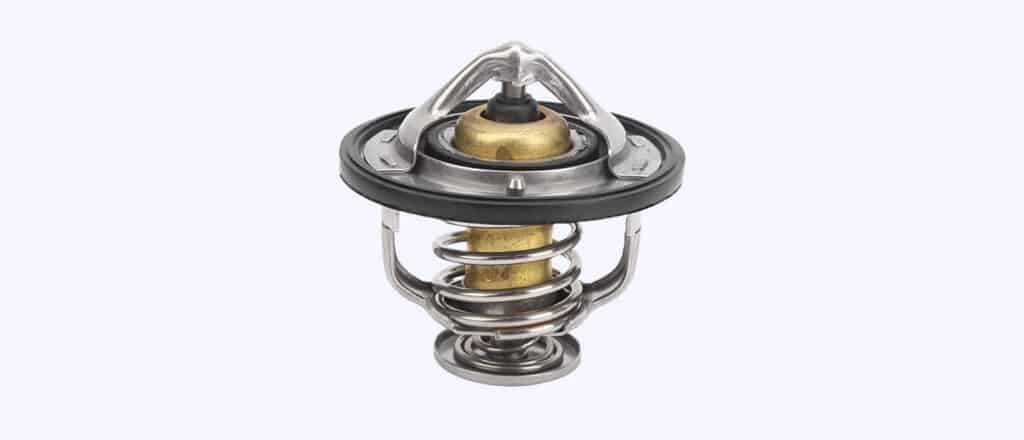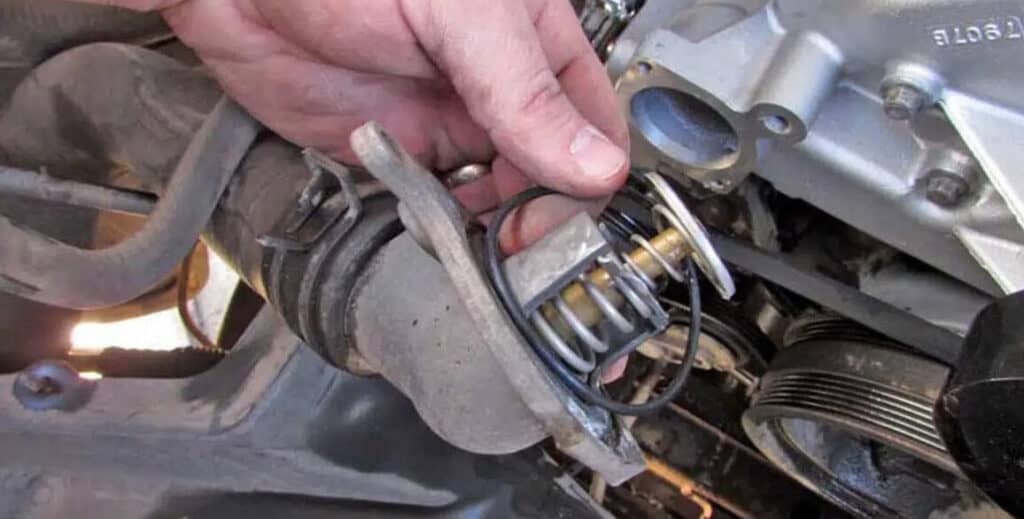Introduction
Is your vehicle acting unusually? Perhaps, it’s taking an extended period to warm up, or it’s overheating more often than not. These signs could indicate an issue with your car’s thermostat. Despite being a small component, the thermostat plays a critical role in controlling your vehicle’s engine temperature. Being aware of potential problems and catching them early can save you from costly repairs in the future.

Overheating Engine: The Most Common Symptom of a Bad Thermostat
The primary, most frequently observed symptom of a malfunctioning thermostat is an overheating engine. If you see the temperature gauge steadily creeping into the red zone or the engine temperature warning light flashing, it’s a clear signal that something’s amiss. An overheating engine can be attributed to a faulty thermostat that remains closed, preventing the coolant from circulating to the engine.
Excessive heat can cause severe damage to your engine components, leading to expensive repairs or even engine replacement. If your car’s engine frequently overheats, it’s a strong indication that your thermostat might need checking or replacing. However, overheating can be caused by various issues, including a leak in the cooling system, a clogged radiator, or a malfunctioning water pump. Hence, it’s crucial to have a professional diagnose the exact cause of overheating.
Low Coolant Level: A Warning Sign of Thermostat Malfunction
Another tell-tale sign of a potentially faulty thermostat is a low coolant level. When your engine continually overheats due to a malfunctioning thermostat, it can lead to faster evaporation of the coolant. Consequently, if you find yourself frequently refilling the coolant, it might be indicative of a thermostat issue.
However, a low coolant level might also suggest a leak in your vehicle’s cooling system. Therefore, before jumping to conclusions, it’s essential to check your car for any coolant leaks. Check the area where you usually park your car for any signs of coolant puddle. Also, look for any visible signs of leaks in the hoses, radiator, and the water pump. If no leaks are detected, it’s likely that your thermostat is the culprit.
Slow to Warm Up: Why Your Car Might be Taking Too Long to Reach Optimal Temperature
Interestingly, a car that takes an unusually long time to warm up can also be a sign of a faulty thermostat. If a thermostat is stuck open, it allows the coolant to flow freely and continuously through the engine, thereby preventing it from reaching its ideal operating temperature. This issue can be particularly noticeable during winter when you’re relying on your car’s heater to keep you warm during your commute.
A slow-warming engine isn’t just an inconvenience. An engine that’s unable to reach its optimal operating temperature can lead to increased wear and tear, reduced performance, and poor fuel efficiency. Therefore, if your vehicle is taking longer than usual to warm up, it’s advisable to have your thermostat checked.
Poor Fuel Efficiency: A Sign of a Faulty Thermostat
The thermostat’s condition can directly impact your car’s fuel efficiency. An engine that’s either running too hot or too cold isn’t operating efficiently. In turn, an inefficient engine consumes more fuel, leading to poor fuel economy. So, if you observe a sudden, unexplained drop in your car’s fuel efficiency, it could be a sign of a malfunctioning thermostat.
Monitoring your vehicle’s fuel efficiency can help you identify potential issues early. A sudden change in the vehicle’s fuel consumption often signifies an underlying issue that needs immediate attention. While poor fuel efficiency can be caused by various factors, including improper tire pressure or a dirty air filter, a faulty thermostat is often an overlooked culprit.

Unusual Smells or Smoke: What it Might Mean for Your Thermostat and Engine Health
Lastly, if you detect unusual smells or see smoke emanating from under your car’s hood, it could be a sign of a serious problem with your thermostat or other components of the engine. Overheating due to a bad thermostat can cause the coolant to leak onto hot engine parts, resulting in smoke and a sweet or syrupy odor.
This symptom signifies a severe issue that requires immediate attention. If ignored, it can lead to catastrophic engine damage, which can be extremely costly to repair. Therefore, if you encounter this issue, it’s crucial to get your car to a professional mechanic as soon as possible to diagnose and resolve the problem.
Conclusion
The thermostat may be a small part of your car, but it plays an integral role in your engine’s health and overall performance of your vehicle. By staying vigilant and recognizing the signs of a malfunctioning thermostat—overheating, low coolant levels, slow warm-up, poor fuel efficiency, and unusual smells or smoke—you can take preventive measures to avoid significant damage and ensure your car continues to perform optimally.
Remember, professional advice is invaluable when you’re in doubt. Regular maintenance, early detection of issues, and timely replacements are vital to prolonging your car’s lifespan. Always be in tune with your vehicle’s performance and don’t ignore the signs it’s giving you. Your car’s health and your safety on the road depend on it.
